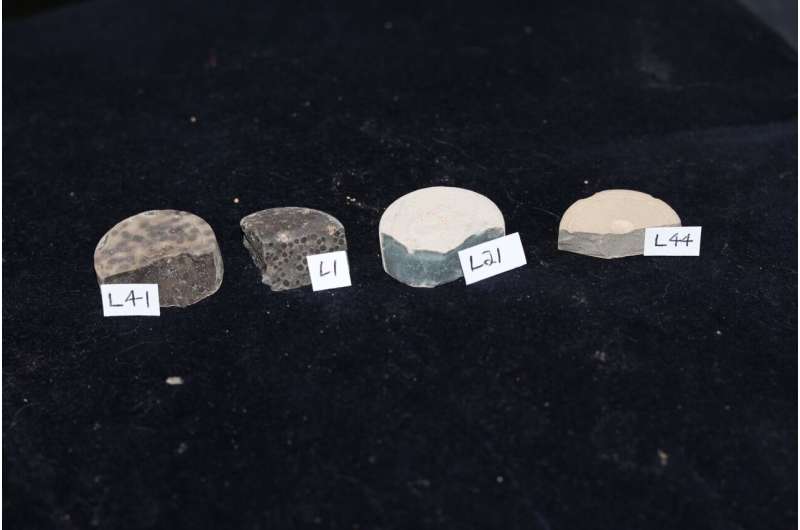Keeping nuclear power safe

Nuclear energy is clean, powerful, affordable, and zero-emission. A new study uses the Canadian Light Source (CLS) at the University of Saskatchewan to help ensure that waste from nuclear power plants remains safe and secure for thousands of years to come.
The project, led by Dan Kaplan and Dien Li, researchers at the Savannah River National Laboratory in South Carolina, looks at storing iodine, which is generated during uranium use, including in nuclear power generation.
Among the challenges of iodine management is its slow rate of decay—it has a half-life of 16 million years. Iodine is volatile and highly mobile in the environment, making containment critically important in nuclear waste management.
Currently, nuclear waste disposal sites use Ag-zeolite to sequester iodine from nuclear waste streams, which is then encased in concrete to prevent leaching.
"We want to make sure that iodine is not leaching out in the long term so we can put the concrete underground without any risk to the public," said Li who conducts a diverse range of research focused on mines and site remediation.
What has been missing until now is a detailed study of how effective various types of concrete are at containing iodine-storing Ag-zeolite, and what specific forms of iodine might escape over time.
Li and his colleagues used the advanced technology available at the CLS to see which of two types of concrete work best at containing three different chemical forms of iodine. Notably, they tested the most commonly used waste containment material, which is concrete with slag. Slag, he explained, is a commercially available chemical mixture composed largely of coal ash produced in coal-burning power production.
"The CLS allowed us to precisely determine what kind of iodine is most stable and what form may leach out of the concrete," said Li. This will help improve iodine management and disposal at sites worldwide.
Their study, published in Environment International, showed the cements with slag "have problems with long-term containment of iodine," while they work very well at containing other radioactive elements.
"Managing nuclear waste is very complicated," says Li.
"Moving forward, there is a lot more research to do," he said. "The amount of iodine waste is going to keep increasing so we need to be looking at new technologies or products to see if they work well with other contaminants as well as iodine."
More information: Daniel I. Kaplan et al. Iodine speciation in a silver-amended cementitious system, Environment International (2019). DOI: 10.1016/j.envint.2019.02.070
Journal information: Environment International
Provided by Canadian Light Source


















